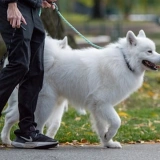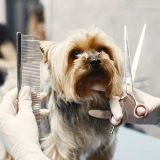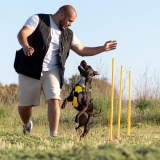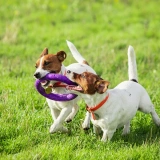Large Munsterlanders are smart, enthusiastic, and naturally cooperative. Their strong work ethic and love for human companionship make them easy to train, though they need consistent guidance and early socialization to ensure good manners.
This breed is happiest when given a job—whether it’s hunting, hiking, or dog sports like agility or obedience. Without enough stimulation, they may become restless or bored.
They have a medium-to-long, slightly wavy coat that’s weather-resistant but requires regular grooming to stay neat and tangle-free.







